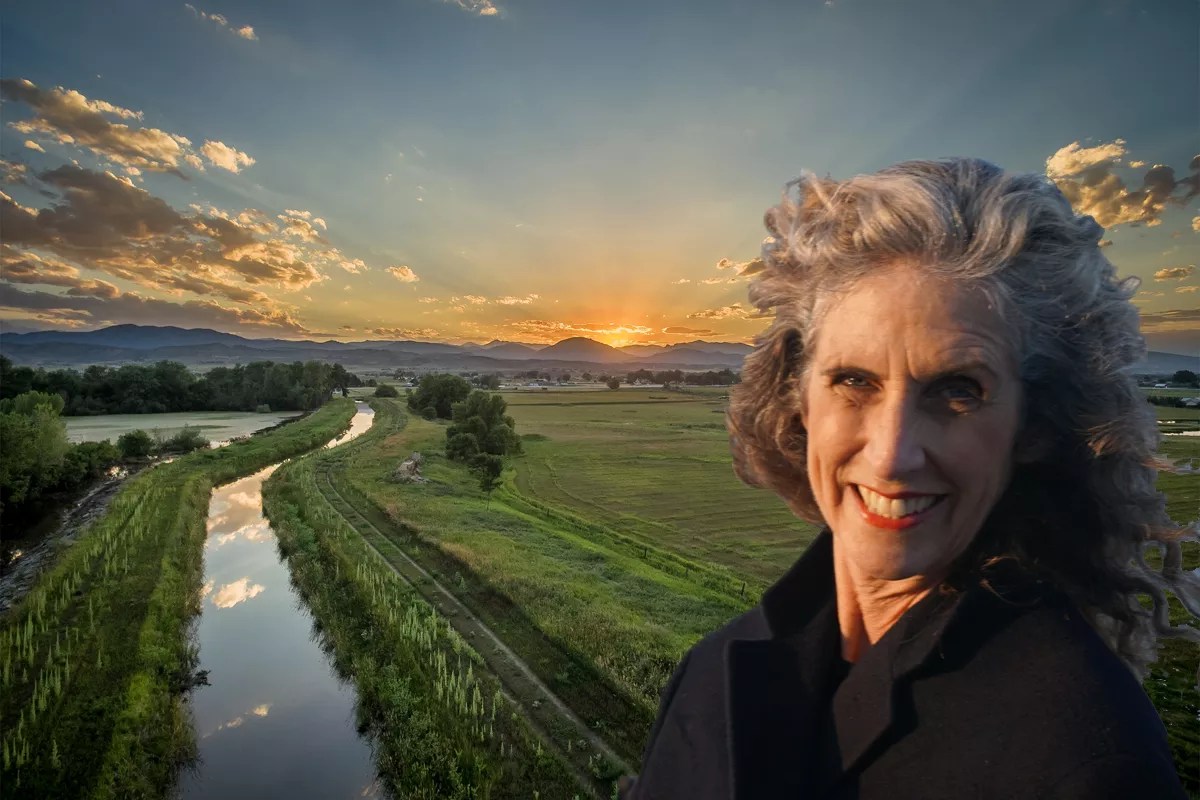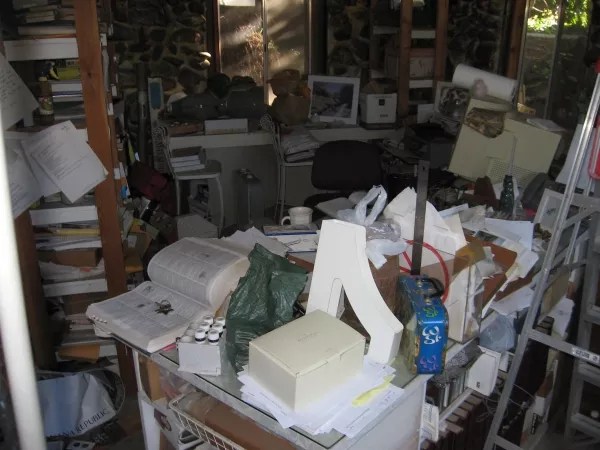
Diego Lynch

Audio By Carbonatix
Tershia d’Elgin’s book, The Man Who Thought He Owned Water: On the Brink With American Farms, Cities, and Food (University Press of Colorado), recently received the Colorado Humanities Creative Nonfiction Award. A water-resources consultant and social activist, Elgin oversees a farm on the South Platte with her family. She has received two congressional recognitions, and will be in Denver next weekend to talk about her book and the Colorado Water Plan, the subject of this op-edit:
Richly embroidered and promoted by “outreach” dollars, the 2015 Colorado Water Plan seems widely accepted at face value. Some water professionals – especially those not tied up in politics – remain dubious. Urbanites who value an “edible Colorado” and thriving natural systems should be, too. Add reminders, whether hurricanes or September 2013’s rainstorms, that rampant development and impervious surfaces near waterways invite catastrophe.
True, water functionaries assembled to create the plan some years ago faced a huge challenge: Their task wasn’t to make an already crowded land – a land with traffic, ravaged ecosystems, contaminants, fires, floods, diseased forests, and struggling farmers and ranchers – healthier and more resilient. Their challenge was to accommodate twice as many people by 2050. Demography algorithms had calculated that this number of humans would keep the economy “growing.” No one mentioned the naked truth, that this challenge served development interests, the same interests that had resulted in the aforementioned ravages.
Water functionaries stared hard at each other. Ten million Coloradans? With what water? They were at least 450,000 acre-feet short. Plus, science predicted an arid West.
Will you step up to support Westword this year?
At Westword, we’re small and scrappy — and we make the most of every dollar from our supporters. Right now, we’re $20,000 away from reaching our December 31 goal of $50,000. If you’ve ever learned something new, stayed informed, or felt more connected because of Westword, now’s the time to give back.

University of Colorado Press
Soul crushing aside, they decided that the Colorado Water Plan must weave supplies from storage, efficiencies, reuse, fallowed agriculture and purloining more water from the Western Slope. Problem? These strategies defy the hydrologic cycle as well as biodiversity and agriculture’s reliance on sufficient clean water. Oh, well. The greatest victims wouldn’t be where the votes were – in Front Range municipalities. A good number wouldn’t even be human.
Colorado imposed water efficiencies fifteen years ago – shorter showers, more efficient toilets, less watering. Individual urbanites consumed less but the spare water went to new urbanites. Net consumption actually increased, decreasing the water leaving sewage plants. This tactic continues. Downstream wildlife gets less water, as do farmers. Colorado-grown produce diminishes.
Reuse is another veiled tactic. It involves treating sewage, then using that “grey water” in landscape and toilets. Commendable thrift, but resourcing and manufacturing dual piping takes water, too – someone else’s water. Reuse also demands pumping, and energy production is water-intensive. However, the real rub is that water reuse drives up salinity and contaminants in our ecosystems.
Here’s how: Fresh water from the mountains contains approximately 200 parts per million (ppm) inorganic salts and other minerals – known cumulatively as “total dissolved solids.” Exposed to sunlight, water evaporates and the remaining water gets saltier. Water uptake by forests, crops and landscape also increases dissolved solids in the remainder, as do industrial chemicals. Municipal sewage in our state is upwards of 400 ppm total dissolved solids, sometimes as high as 800 ppm. Each time sewage is treated, salinity increases by at least 200 ppm. Cycle repetition drives up these numbers, before effluent is released downstream…for use by our farmers.
Few plants thrive in saline water. Even 400 ppm kills some crops. Historically, if you really wanted to undermine an enemy, you salted his fields. Now we’re doing it to ourselves!
Researching my book, The Man Who Thought He Owned Water, I explored why native Northern Leopard Frogs had vanished from our farm, together with the frogs’ appetite for crop-season insects. I learned that the Environmental Protection Agency does not regulate “contaminants of emerging concern,” pollutants for which removal procedures are not yet established, not even in drinking water. Many of these contaminants are “endocrine disruptors” derived of pharmaceuticals, cleaning agents, personal-care products and hormones. Endocrine disruptors interrupt reproductive systems, not just of creatures like fish and frogs that live in water, but in us, too.
Then there are the microbes. Remember the listeria outbreak that did in Colorado cantaloupe in 2011? Many farmers must now monitor their water supply, once a week, for bacteria that may have originated elsewhere. And that’s before doubling the population.

Tershia d’Elgin’s “Situation Room.”
upcolorado.com
Hardly anyone except farmers seems to recognize that agriculture and cities are interdependent. Food is made of water! The average U.S. resident now uses around 100 gallons of tap water daily, but according to water-footprint statisticians, each consumes an additional 1,900 gallons a day in the form of food and clothing – mostly cultivated from agriculture.
Every fallowed field reduces human and wildlife food supply. Colorado’s plan to double population while cutting food production by a third (or more) changes the supply-to-capita ratio by almost 70 percent! Moreover, drying up land contributes to climate change, and climate change increases aridity.
Our plan necessarily relies on other states’ agriculture. Huge mistake. Forty-six percent of U.S. farm sales are derived from crops cultivated in the seventeen westernmost states, using water from the Rockies, water that cities are releasing less. Throughout the West, other water functionaries stitch similar plans, all nabbing water from agriculture to keep cities growing.
We chewers and swallowers stay oblivious because food cultivation has shifted to Central America and elsewhere. In the last twenty years, food imports have tripled but exports have gone up by only one-half of 1 percent. We have only to look at ancient Rome and present-day Venezuela to learn that civilizations that can’t feed their populations crumble! Want of water forced Somalian and Syrian farmers to abandon their fields. Why intentionally inflict this on our own state?
A great blow to Colorado-grown food and wildlife is already emerging from the economic engine that is growing population. That and the Colorado Water Plan bear closer scrutiny as well as insistence on “get real” leadership. Out loud!
Conservation Colorado will present Tershia d’Elgin discussing The Man Who Thought He Owned Water at 7 p.m. Friday, September 8, at BookBar, 4280 Tennyson Street. The Denver Public Library will host d’Elgin at 2:30 p.m. Saturday, September 9, in the Book Club Room, CEN Floor 1, 10 West 14th Avenue Parkway. Find out more at tershiadelgin.com.